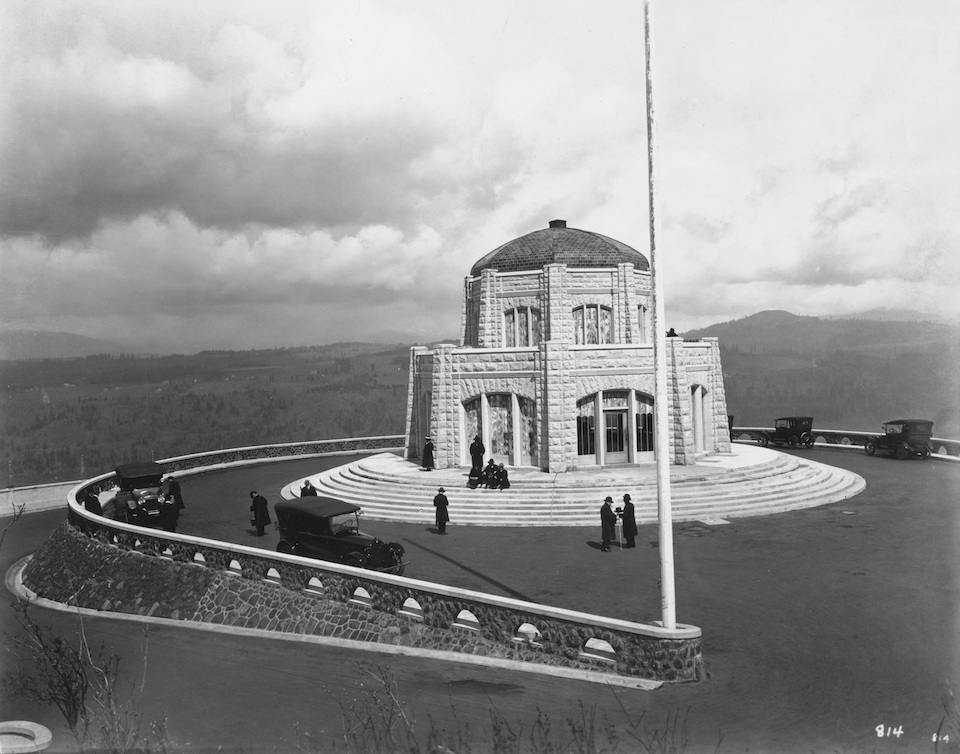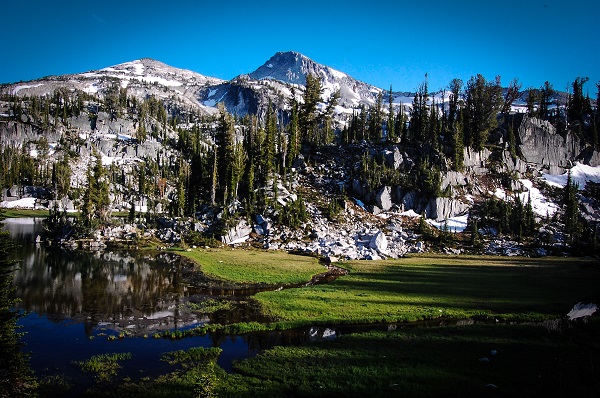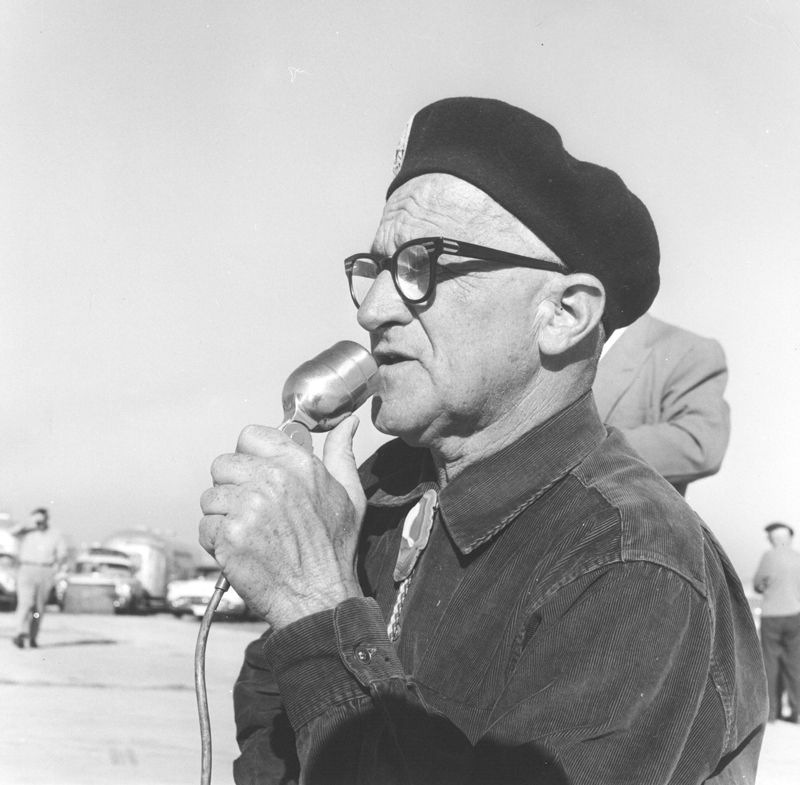written by Lindsay McWilliams | photos courtesy of Oregon Parks and Recreation
Along the Columbia River Highway and perched on Crown Point overlooking the river, the Vista House looks a bit out-of-place. Not because of its surrounding scenery, but because of when it was built.
The round, three-story sandstone “house” was designed in the style of Art Nouveau in the year 1918. The green-tiled roof and stained glass windows don’t attempt to bring this building into the modern-day. Interior Tokeen Alaskan Marble and engraved 19th-century poems on its pillars don’t pretend to be new. Those who love and cherish the Vista House are committed to preserving the anachronism.
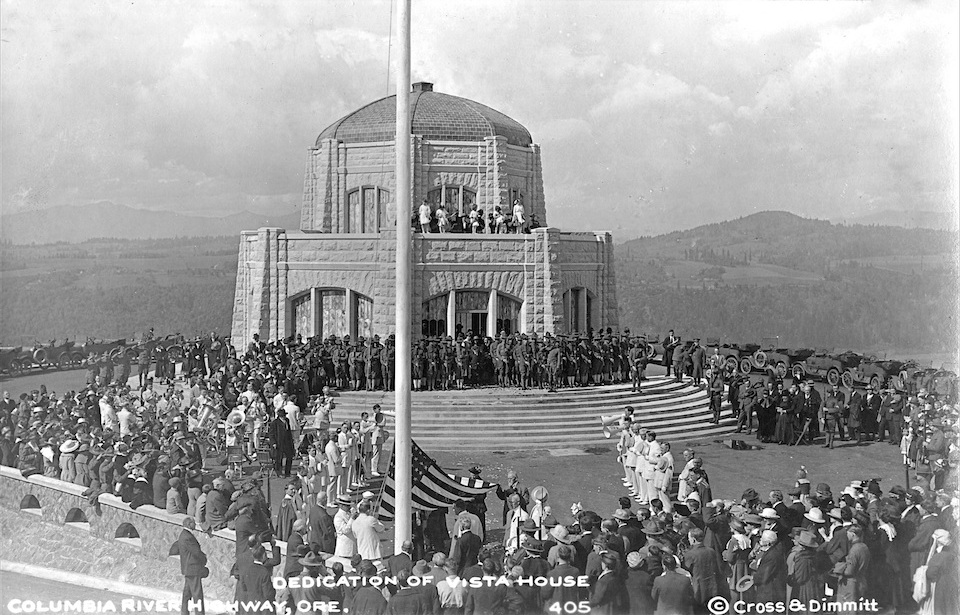
“It’s amazing the amount of pride that Oregonians have in their land and their historic landmarks,” said Park Ranger Dorothy Brown-Kwaiser, who oversees seventeen different parks along the West Columbia Gorge. “Vista House is an Oregon icon that has always stood for the community.”
When Samuel Lancaster, an engineer for the Columbia River Highway, initially developed the idea for Vista House, he envisioned the property to fulfill three main purposes. The Vista House would act as a rest stop for travelers, a view point and a memorial to the pioneers who traveled through the Columbia River.
Using funds from Multnomah County and a few private donations, the monument opened to the public in 1918. The Vista House was built with lavish materials and detailed craftsmanship, including handcrafted bathroom fixtures and drinking fountains, mahogany doors, opalescent stained glass and marble flooring facing north-to-south.
In 1994, various organizations including Oregon Parks and Recreation and Friends of Vista House pooled their resources to assess the structural state of the building. Six years later, a five-year, $4 million restoration project began. The project restored the building to its original state, while adding accessibility features and modern technologies.
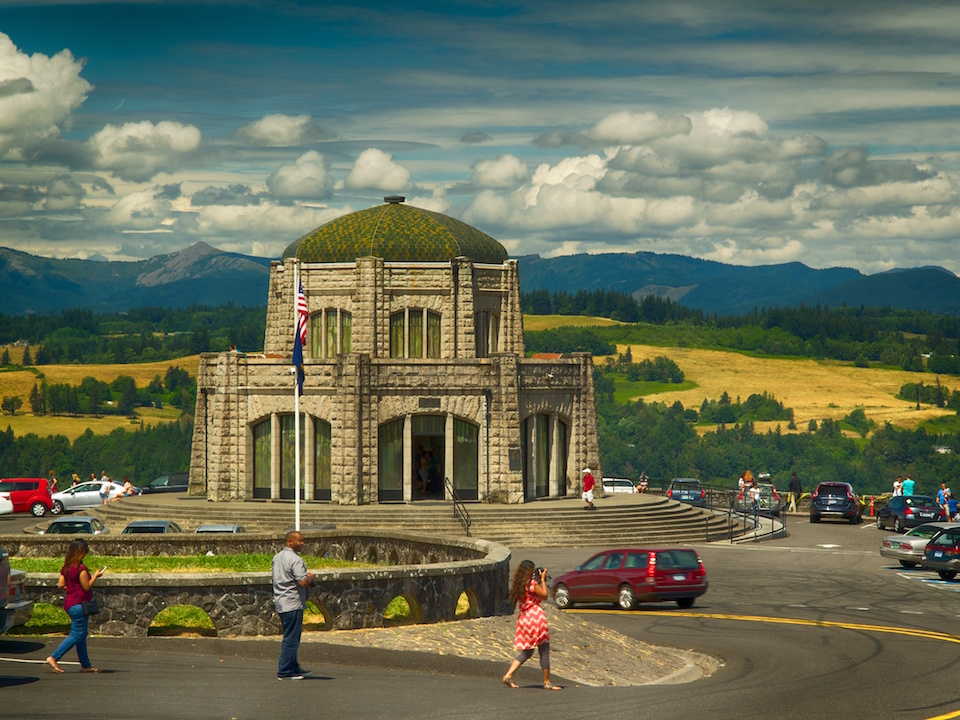
Today, more than 150 volunteers from Friends of Vista House run the building’s operations, which include a coffee shop, a gift shop and community events. On the last Friday of each month, they hold a series of song circles where guests sing camp songs and folk music, savoring the ambient acoustics of the century-old building.
Beyond the building itself, the view is often what attracts travelers to Crown Point. “The view was there even before the building,” Brown-Kwaiser said. “You can see the Columbia River and Poca Rock (noted by Lewis and Clark), and on a clear day you can see Bonneville Dam and over into Washington.”
Lancaster explained it a bit more philosophically.
“. . . an observatory from which the view both up and down the Columbia could be viewed in silent communion with the infinite.”


